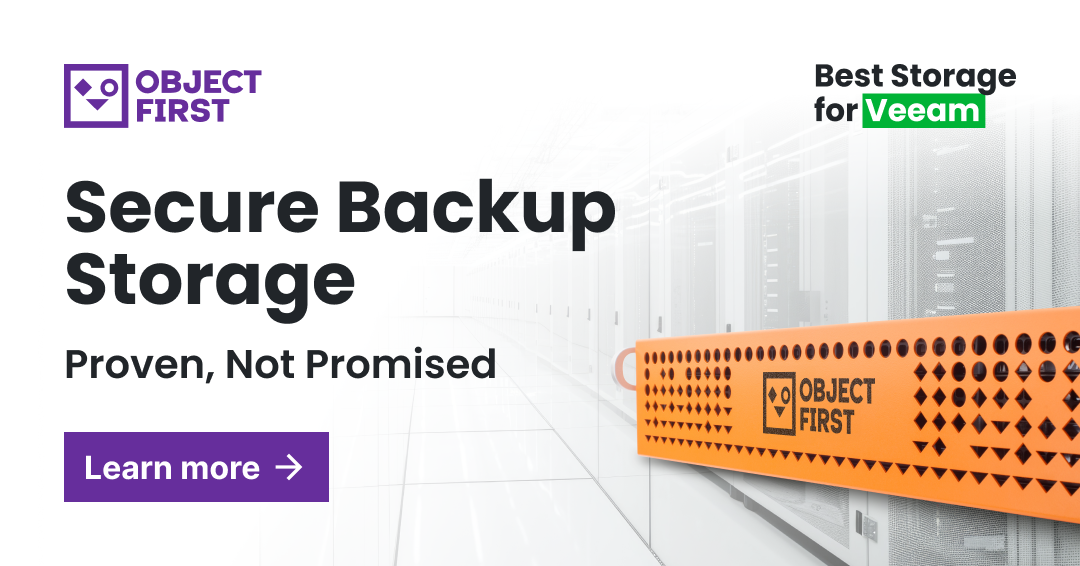Data Security: How to Keep Your Information Safe
By 2031, ransomware is projected to cost victims $265 billion annually, striking a business, consumer, or device every two seconds.
What's worse, no company is too small to be a target. Cybercriminals don't discriminate, and without strong defenses, it's not a matter of if but when an attack happens.
This guide cuts through the noise, breaking down the biggest threats, data security best practices, and must-have tools so you can stay one step ahead of the evolving threats.
What Is Data Security?
Data security is the process of protecting digital information from unauthorized access, corruption, and theft throughout its lifecycle. It encompasses the entire spectrum of information security, including physical protection for hardware and secure storage devices, administrative controls to manage access, and logical security measures for software applications.
Policies and procedures strengthen these defenses, ensuring data stays secure across all environments. By implementing encryption, immutable backups, antivirus, or real-time monitoring, organizations can prevent different types of breaches and stay compliant with regulations.
Why Is Data Security Important?
The average cost of a data breach has surged to $4.89 million. Post-breach recovery alone accounts for $2.8 million, making 2024 the most expensive year for cybersecurity failures.
On the flip side, investing in strong data security measures brings real business value, including:
- Uninterrupted Operations: Cyberattacks can shut you down in seconds. Robust protection keeps your systems safe, eliminating costly downtime.
- Regulatory Compliance: Meeting continuous data protection standards like GDPR, HIPAA, and NIS2 can help you avoid hefty fines and legal repercussions.
- Cost Savings: Data breaches are very expensive, from legal fees to lost revenue. Investing in security upfront saves businesses millions in potential damages.
- Faster Recovery: Security isn’t just about prevention but also about bouncing back fast when things go wrong, lowering damage and disruption.
- Lower Risk of Fraud: Prevent data leaks that fuel identity theft, financial fraud, and insider threats before they happen.
Types of Data Security
At the core of data security lies the CIA Triad: Confidentiality, Integrity, and Availability — three principles that define how data should be protected.
- Confidentiality ensures data is only accessible to those who are authorized.
- Integrity guarantees that information remains accurate and unaltered.
- Availability ensures that data is always accessible when needed.
To uphold these principles, organizations must implement the following security measures.
Encryption
Data encryption scrambles data into an unreadable format, making it useless to anyone without the proper decryption key. Modern encryption tools manage security keys and safeguard entire files or databases, protecting everything from financial transactions to corporate secrets.
Data Erasure
Data erasure permanently removes data from backup storage devices, ensuring it can never be recovered, even with advanced forensic tools. Unlike simple file deletion, which leaves traces behind, it overwrites data multiple times, preventing unauthorized access when repurposing or disposing of hardware.
Data Masking
Data masking alters sensitive information by replacing it with fictional yet realistic data, ensuring it remains protected and usable for testing, development, or analytics. This method allows businesses to work with data securely without exposing confidential information, reducing the risk of leaks or misuse.
Data Resiliency
Data resiliency guarantees that critical information remains accessible and intact, even in the face of cyberattacks, system failures, or natural disasters. By leveraging failover systems, replication across multiple locations, and cyber resilience strategies, businesses can quickly recover lost data and keep operations running smoothly.
The 9 Best Practices for Ensuring Data Security
Cybersecurity isn't one-size-fits-all, and each company must build a security strategy based on its unique risks, industry regulations, and business priorities.
However, below are some best practices that do apply to everyone.
- Tamper-Proof Your Backups: Making backups immutable means cybercriminals can't alter or delete them, ensuring you always have a clean copy for smooth recovery.
- Never Trust — Always Verify: Zero Trust approach eliminates blind faith. Every user, device, and application must continuously prove they belong before gaining access.
- Add an Extra Lock on Logins: Passwords alone won't stop hackers. Multi-factor authentication (MFA) such as Google Authenticator or Microsoft adds a second layer of protection.
- Limit Who Sees What: Role-Based Access Control (RBAC) will guarantee that your employees can only access the data they need.
- Detect Attacks Before They Happen: Tools like Microsoft Sentinel and Splunk analyze real-time data to detect unusual activity, such as suspicious logins or large file transfers, helping businesses stop threats before they escalate.
- Protect Every Device, Everywhere: Endpoint security locks down computers, mobile devices, and cloud applications, blocking unauthorized access at every entry point.
- Test Defenses Like Hackers Would: Regularly conduct security audits and penetration testing to expose weak spots before criminals do.
- Build a Cybersecurity Dream Team: Most disasters start with human error. Train your staff to recognize phishing scams, suspicious links, and social engineering tactics.
- Prepare for the Worst: Even with strong defenses, breaches can still happen. Business continuity and disaster recovery plans, supported by tools like Veeam, ensure you can quickly restore critical systems and recover your data.
Major Data Security Risks
Ransomware
Ransomware locks critical files behind encryption, holding them hostage until a ransom is paid, often in cryptocurrency. Cybercriminals use phishing emails, malicious links, and software vulnerabilities to spread these attacks, crippling businesses and individuals alike.
Social Engineering Attacks
Hackers don’t always rely on code; they often exploit human nature. Social engineering tactics like phishing emails, baiting, and impersonation trick victims into one careless click that can lead to a full-scale breach.
SQL Injection
A single vulnerability in a website’s database can expose mountains of sensitive data. SQL injection attacks manipulate queries to gain unauthorized access, steal customer records, or even take control of entire systems.
Insider Threats
Not all threats come from outside. Disgruntled employees, careless mistakes, and stolen credentials can be just as damaging. Whether intentional or accidental, they threaten business data, making access control, monitoring, and employee training essential.
Data Loss During Cloud Migration
Moving data to the cloud isn’t always seamless. Poor planning, compatibility issues, and human error can lead to lost or corrupted files. Without secure migration protocols and rigorous testing, businesses risk losing them permanently.
Device Loss or Theft
Laptops, smartphones, and USB drives hold a goldmine of sensitive data, and when they go missing, so does security. Without encryption or remote-wipe capabilities, lost devices can become a direct pipeline for hackers to access confidential company information.
Data Security vs. Data Privacy and Data Protection
Data Security vs. Data Privacy
Think of data privacy as who gets to see your information and how it’s used, while data security is the defense system that protects it from hackers and breaches.
Privacy ensures individuals have control over their data, deciding who can access it, how it’s shared, and for what purpose. Regulations like GDPR enforce these rights, requiring companies to obtain consent and handle data responsibly.
Security, on the other hand, prevents unauthorized access through encryption, authentication, or threat monitoring. Even if privacy rules dictate that only certain people can access data, security assures that cybercriminals, insiders, or system vulnerabilities don’t compromise it.
Data Security vs. Data Protection
Data security is like a high-tech alarm system. Its job is to block hackers, prevent breaches, and keep unauthorized users out using encryption, firewalls, and access controls.
Data protection, however, is your safety net. It ensures data isn’t lost to accidental deletions, system failures, or corruption through backups, redundancy, and recovery solutions.
Solutions like immutable backups, failover clusters such as VMware or vSphere HA, and disaster recovery tools help businesses restore lost data to resume operations as quickly as possible.
Critical Data Security Solutions
Here’s a list of advanced tools and solutions for avoiding cyber threats.
- Identity and Access Management (IAM): Enforces strict access controls through tools like Okta, Microsoft Entra ID (formerly Azure AD), and CyberArk, ensuring only authenticated and authorized users can access sensitive data.
- Security Information and Event Management (SIEM): Monitors, detects, and responds to security threats in real-time by analyzing data from across your IT environment.
- Intrusion Detection and Prevention Systems (IDPS): Identifies and blocks malicious activity before it can compromise your network.
- Cloud Access Security Broker (CASB): Protects cloud environments by monitoring activity, enforcing security policies, and preventing unauthorized data access.
- Data Discovery & Classification: Tools like Varonis, Spirion, and BigID help organizations locate, categorize, and label sensitive data, ensuring proper protection, compliance, and risk management.
- Database Activity Monitoring (DAM): Continuously tracks and analyzes database activity to detect suspicious behavior and prevent unauthorized access.
- Privileged Access Management (PAM): Restricts and monitors high-level system access to prevent insider threats and credential misuse.
- Data Loss Prevention (DLP): Identifies and blocks attempts to share, transfer, or leak sensitive data outside your organization.
Ensure Data Security with Ootbi by Object First
According to a recent ESG survey, 81% of IT professionals agree immutable backup storage is the best defense against cyber threats.
But here's the problem: many vendors claiming to offer immutability don't meet all the requirements, leaving you with a false sense of security.
Ootbi (Out-of-the-Box Immutability) protects Veeam customers from ransomware threats, delivering secure, simple, and powerful backup storage with True Immutability.
This means that however deep an attacker gets into your system — even into the backup repository itself — they can't corrupt or encrypt your backup files.
Book a free live demo and see how Ootbi by Object First can secure your data.
FAQ
What Are Data Security Regulations?
Data security regulations enforce standards to protect sensitive information and ensure compliance. Key regulations include GDPR (EU data privacy), CCPA (California consumer rights), HIPAA (U.S. health data protection), SOX (financial data security), PCI DSS (payment card security), and NIS2 (EU cybersecurity for critical sectors).
What Are the Four Elements of Data Security?
The four pillars of data security are Confidentiality, Integrity, Authenticity, and Availability. Confidentiality controls who can access data, Integrity ensures accuracy and reliability, Authenticity verifies data origins to prevent tampering, and Availability guarantees uninterrupted access, even during cyberattacks or system failures.


